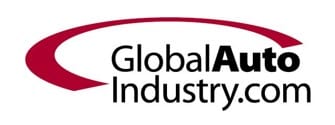![]() China has launched or announced a significant number of regulatory initiatives in the automotive sector over the first months of 2016. I have selected a number of regulatory initiatives representing such trends, below, from my work on China compliance issues and discussions with relevant regulatory authorities.
China has launched or announced a significant number of regulatory initiatives in the automotive sector over the first months of 2016. I have selected a number of regulatory initiatives representing such trends, below, from my work on China compliance issues and discussions with relevant regulatory authorities.
New Energy Vehicles
China released a number of measures in January 2016 aimed at, among other goals, moving forward on the New-Energy Vehicle Industry Development Plan for 2015-2020. The fundamentals for this Development Plan have a longer history. For instance, the 2009 Management Rules for New-Energy Vehicle Manufacturers and Product Market Access (Ministry of Industry and Information Technology) defined new-energy vehicles as “vehicles which adopt unconventional fuel as their power source (or use conventional fuels with adoption of new vehicle power devices), integrate advanced power control and driving technologies and employ advanced technical principles, technologies and new structures. New-energy vehicles include hybrid vehicles, electric vehicles (BEV, including solar vehicles), fuel cell electric vehicles (FCEV), hydrogen engine cars and other new-energy source vehicles (e.g., vehicles with high energy storage devices).
Recently released new-energy vehicle measures include a Circular on the Reward Policy for New-Energy Car Charging Bases and on Strengthening the Promotion and Application of New-Energy Cars in the 13th Five-Year [Plan] (Jan. 2016). This Circular clarifies issues associated with national government subsidies to be made available to provincial-level governments establishing good new-vehicle charging infrastructure and promoting the adoption of new-energy vehicles on a large scale. The subsidies are to be made available from 2016-2010 and focus on supporting charging facility construction, operation, and upgrade and associated monitoring system development.
Materials Restrictions and Recycling
New measures involving restricted-material content and recyclability requirements for certain passenger cars entered into effect Jan. 1, 2016. The framework rule setting out these requirements was released in mid 2015 and entitled “Management Requirements for Vehicle Hazardous Substance and Recyclable Utilization Ratios” (“Requirements”). The Requirements specify that hazardous substance content and recyclability ratios for passenger cars carrying no more than 9 persons (M1 category) meet the specifications set out in two separate standards governing these issues. The restriction of hazardous substance (“RoHS”) aspects of the Requirements are sometimes referred to as China’s “Automobile RoHS” program. This program is distinct from the “China RoHS” program reflected in my earlier blog post, here.
Vehicle Batteries
China also recently issued a number of measures aimed at management of vehicle batteries. One of these was issued in January 2016 and is entitled “Policy on Recycling and Utilization Technologies for Electric Vehicle Batteries (2015 edition) (“Battery Policy”). The Battery Policy establishes design, production, recycling, disposal and other requirements on electric vehicle batteries within the territory of the People’s Republic of China. These include restricted substance content parameters (linking to the materials restriction program indicated above) and requirements for transport, storage and disassembly of in-scope batteries. Among other things, the Battery Policy indicates that China will establish a battery product coding system to track the flow of electric vehicle batteries.
Defective Automobile Product Recalls
Detailed requirements for defective automobile product recall and management also entered into effect at the beginning of this year with the title “Implementing Measures for the Regulation on Defective Automobile Product Recall Management.” The Administration of Quality Supervision, Inspection and Quarantine (AQSIQ) issued these Measures to implement earlier Management Regulations on Recall of Defective Automobile Products. Measures apply to enterprises manufacturing, importing, selling, leasing and maintaining auto products (which include automobiles and automobile trailers defined in the Measures) in China.
The Measures reinforce the fact that AQSIQ is the primary authority responsible for nationwide auto product recall work, establishment of an auto product recall information management system, registration of manufacturer and defective auto product information, and announcement of recall information. Per the Measures, any entity or individual is entitled to report potential auto product defects to the relevant authorities. Notably, the Measures do not apply to tires which are not equipped on the auto products upon release of the auto products from the factory in China. AQSIQ separately regulates such tires.
Examples of specific manufacture responsibilities under the Measures include:
– Establishing an auto-product information tracing system to ensure that owners of defective auto products can be timely informed of the applicable scope of the product recall;
– Maintaining records of the auto product design, labeling, inspections, owner’s names, identification card numbers, contact details, date of purchase, auto product identification code, and other information; and
– Registering manufacturer information, auto product technical data, first-sale/owner information, available information on product maintenance and returns, information on product-related personal and property damage, product recalls occurring outside of China, and other information.
The Measures specify that defect investigations can be conducted by the manufactures themselves and/or qualified technical recall institutions, and also describe AQSIQ authority and manufacturer obligations in situations where they are aware of potential product defects, including details on manufacturer drafting of recall plans and registration of such plans with AQSIQ.
Vehicle Emissions
Also in January of this year, China’s Ministry of Environment announced implementing timelines for Stage V motor vehicle emissions standards (“China Motor Vehicle (Stage V) Standards” or “Standards”). These standards were issued with the backdrop of heavy air pollution issues and concerns among government representatives and citizens in China. The China Motor Vehicle (Stage V) Standards apply to light gasoline-powered vehicles, light diesel-powered passenger cars, heavy diesel-powered vehicles which are manufactured, sold, and registered in China. The Standards apply to each type of cars and vehicles in phases over a period ending January 1, 2018.
Key Takeaway
These auto sector regulatory trends may be new to China, but may not be necessarily new to U.S. manufacturers. However, given China’s growing automotive appetite, evolving product quality control requirements, resource constraints and pollution concerns, these regulatory changes are sure to be transformative. They also provide U.S. manufacturers with ample opportunities to bring to bear their significant experience in dealing with automotive energy, electric batteries, product content, recycling recalls, and emissions control.
Source: FOLEY – GAI




